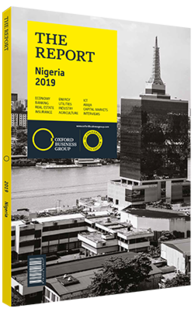Negotiating multiple rates of exchange remains a challenge for Nigeria
With Nigeria’s economy growing again in 2018, policymakers are now in a position to move from avoiding problems to making structural changes. One potential change could be the unification of the various exchange rates for the country’s currency, the naira. The multiple rates now available are a legacy of the past years of crisis, which delivered a long-desired, market-based price discovery option for the naira, but also a system some consider overly complex. The Central Bank of Nigeria (CBN) has always carefully managed the currency and, before oil prices fell, kept it in a range near N155 to the US dollar. By late 2014 this had jumped to over N170, and with government revenue falling alongside oil prices, the CBN closed its foreign exchange auction window in February 2015 and established a pecking order for access to foreign exchange, in which importers bringing in key consumer staples were able to obtain the foreign currency they needed, leaving others to seek out dollars, yen or euros on the parallel market. The CBN began using its foreign reserves to buy naira, propping up its value, and a gap opened between the two rates.
New Market
This has become one of the more controversial policy prescriptions of the administration of President Muhammadu Buhari, which has faced constant pressure from the business community to devalue the currency and allow demand and supply to set rates, so that the naira can find a fair value and provide clarity for investors.
Instead, after several attempts at partially loosening controls, in April 2017 the CBN announced the establishment of a special foreign exchange window for investors, exporters and end-users on the FMDQ over-the-counter markets. This new option is often called the Nigerian Autonomous Foreign Exchange Market (NAFEX). It offers spot trading as well as futures, forward swaps and options. The naira was trading at about N365 to the US dollar in the second quarter of 2018, both here and on the informal market, but at N305 at the CBN, and around N330 according to the Nigerian Foreign Exchange Fixing (NiFEX) rate. “The parallel market used to be a major barometer of the fair valuation of the naira, but there is no longer a huge gap between it and the formal rate,” Kayode Tinuoye, a fund manager for United Capital, told OBG. “The mispricing is no longer significant.” While the IMF has advised Nigeria to unify its multiple rates, this may be more likely in the long term, in particular after the country diversifies its ability to bring in dollars. For example, Dangote, an industrial conglomerate, is building an oil refinery in Lagos that would export some of its output, giving the country another major type of exports. Unifying the rates before this and other projects come to fruition could weaken the naira and boost inflation, according to ratings agency Moody’s. For Nigerian companies with dollar exposure, one question is how they should report earnings. International Financial Reporting Standards state that companies reporting earnings from countries with multiple exchange rates should use the rate that they expect to use in practice to convert money. The NAFEX window is considered the closest to the true market rate and is the most liquid exchange, but another option could be to use a blended rate, incorporating NiFEX. This is widely done on the interbank market, on which banks borrow from each other.
Reserve Policy
The state has now eliminated currency trading as a daily concern, and has also been able to rebuild foreign reserves. Another question that needs to be addressed is a policy pivot in that area. Reserves peaked at about $47bn in April 2018, nearly double the amount two years prior, before sliding below $44bn in October. In early 2018 the CBN outlined a target of growing foreign currency reserves to $50bn by the end of 2018; however, in comments to local press in October 2018, Godwin Emefiele, the CBN governor, flagged the importance of maintaining a stable exchange rate, adding, “We are going to build buffers, but unfortunately I must say that we are in a period where it is difficult to talk about building reserves.”
You have reached the limit of premium articles you can view for free.
Choose from the options below to purchase print or digital editions of our Reports. You can also purchase a website subscription giving you unlimited access to all of our Reports online for 12 months.
If you have already purchased this Report or have a website subscription, please login to continue.

